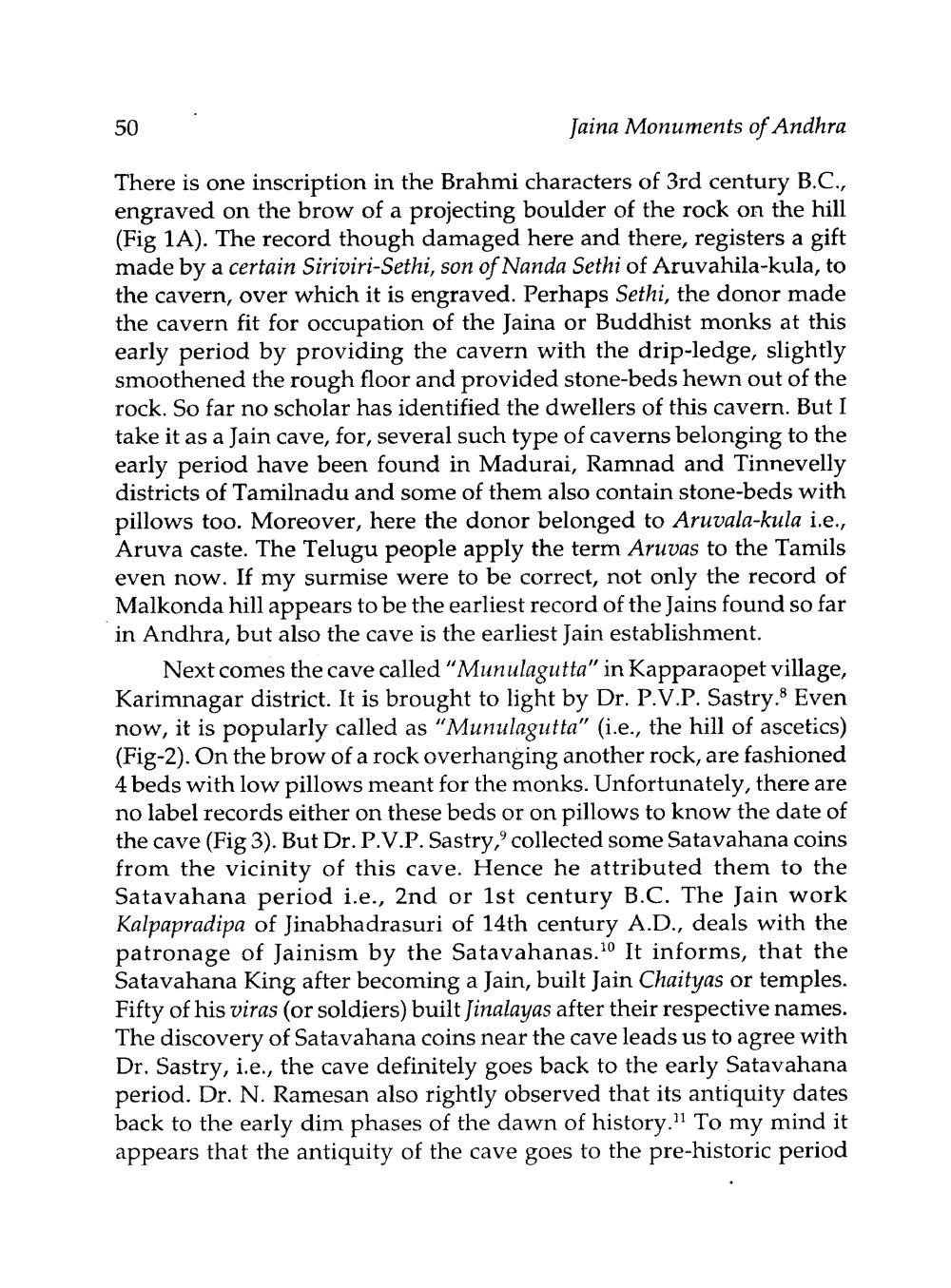________________
Jaina Monuments of Andhra
There is one inscription in the Brahmi characters of 3rd century B.C., engraved on the brow of a projecting boulder of the rock on the hill (Fig 1A). The record though damaged here and there, registers a gift made by a certain Siriviri-Sethi, son of Nanda Sethi of Aruvahila-kula, to the cavern, over which it is engraved. Perhaps Sethi, the donor made the cavern fit for occupation of the Jaina or Buddhist monks at this early period by providing the cavern with the drip-ledge, slightly smoothened the rough floor and provided stone-beds hewn out of the rock. So far no scholar has identified the dwellers of this cavern. But I take it as a Jain cave, for, several such type of caverns belonging to the early period have been found in Madurai, Ramnad and Tinnevelly districts of Tamilnadu and some of them also contain stone-beds with pillows too. Moreover, here the donor belonged to Aruvala-kula i.e., Aruva caste. The Telugu people apply the term Aruvas to the Tamils even now. If my surmise were to be correct, not only the record of Malkonda hill appears to be the earliest record of the Jains found so far in Andhra, but also the cave is the earliest Jain establishment.
50
Next comes the cave called "Munulagutta" in Kapparaopet village, Karimnagar district. It is brought to light by Dr. P.V.P. Sastry. Even now, it is popularly called as "Munulagutta" (i.e., the hill of ascetics) (Fig-2). On the brow of a rock overhanging another rock, are fashioned 4 beds with low pillows meant for the monks. Unfortunately, there are no label records either on these beds or on pillows to know the date of the cave (Fig 3). But Dr. P.V.P. Sastry, collected some Satavahana coins from the vicinity of this cave. Hence he attributed them to the Satavahana period i.e., 2nd or 1st century B.C. The Jain work Kalpapradipa of Jinabhadrasuri of 14th century A.D., deals with the patronage of Jainism by the Satavahanas.10 It informs, that the Satavahana King after becoming a Jain, built Jain Chaityas or temples. Fifty of his viras (or soldiers) built Jinalayas after their respective names. The discovery of Satavahana coins near the cave leads us to agree with Dr. Sastry, i.e., the cave definitely goes back to the early Satavahana period. Dr. N. Ramesan also rightly observed that its antiquity dates back to the early dim phases of the dawn of history." To my mind it appears that the antiquity of the cave goes to the pre-historic period




